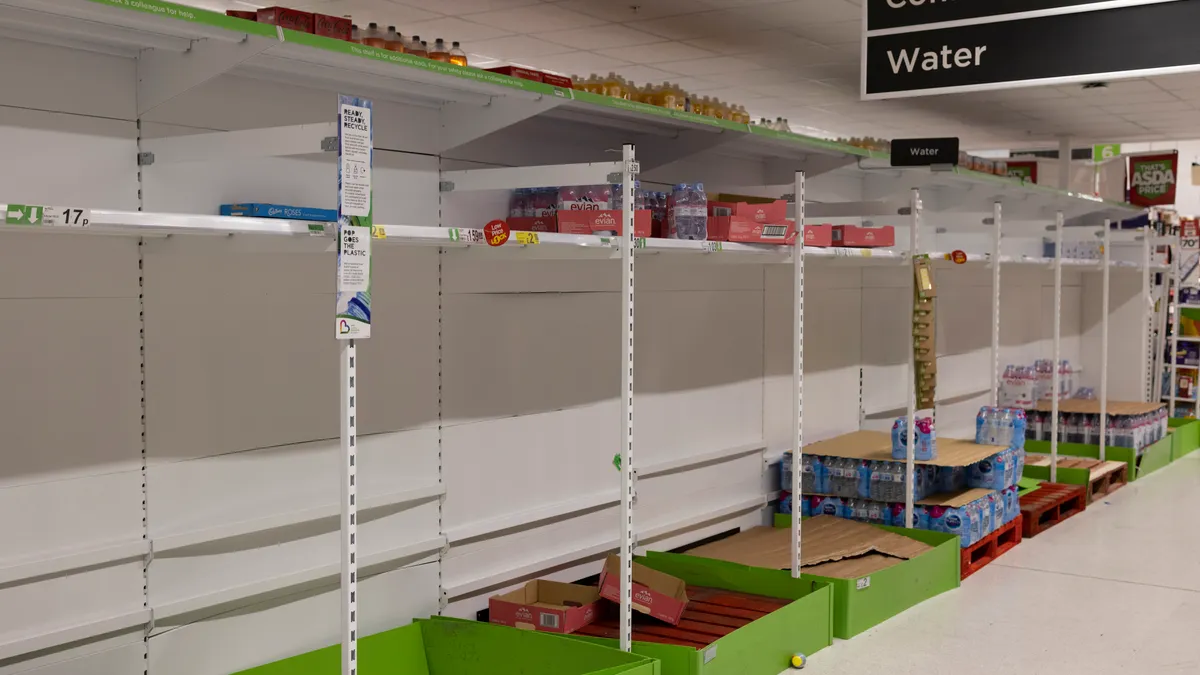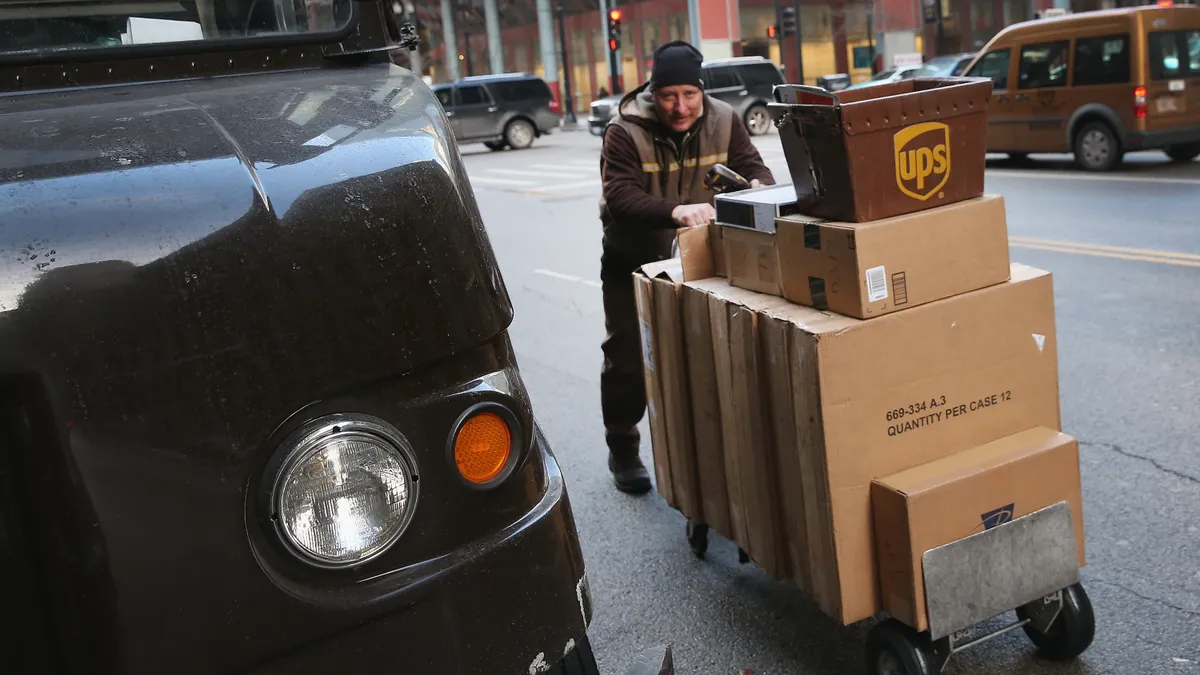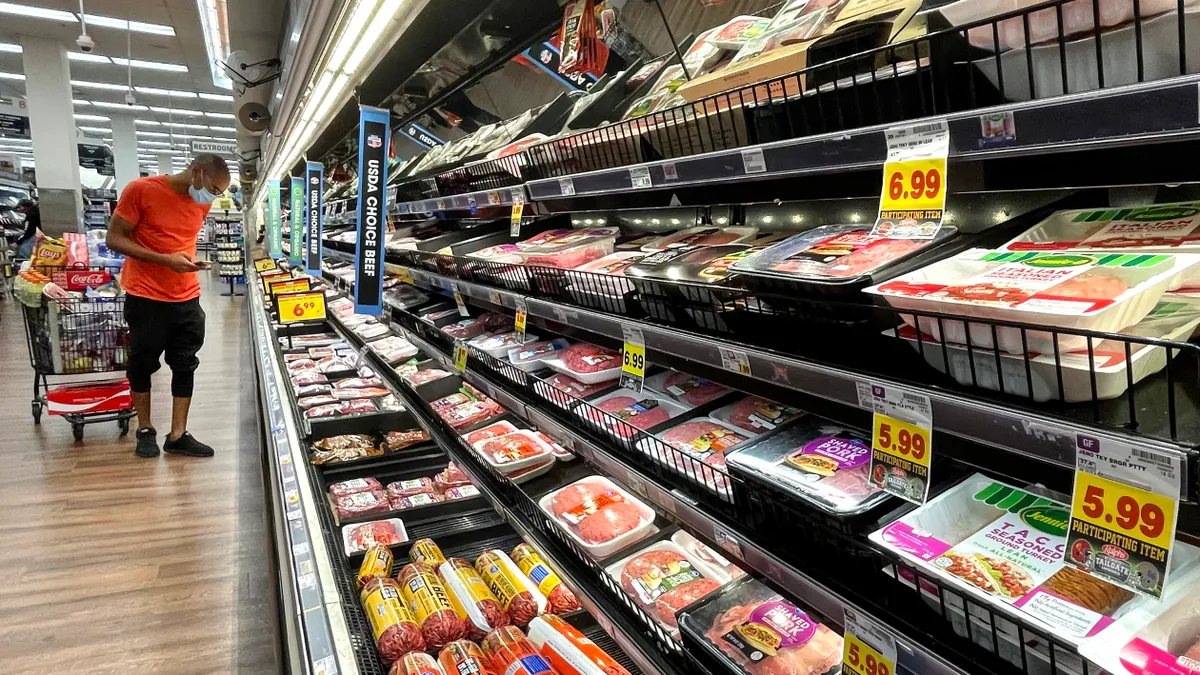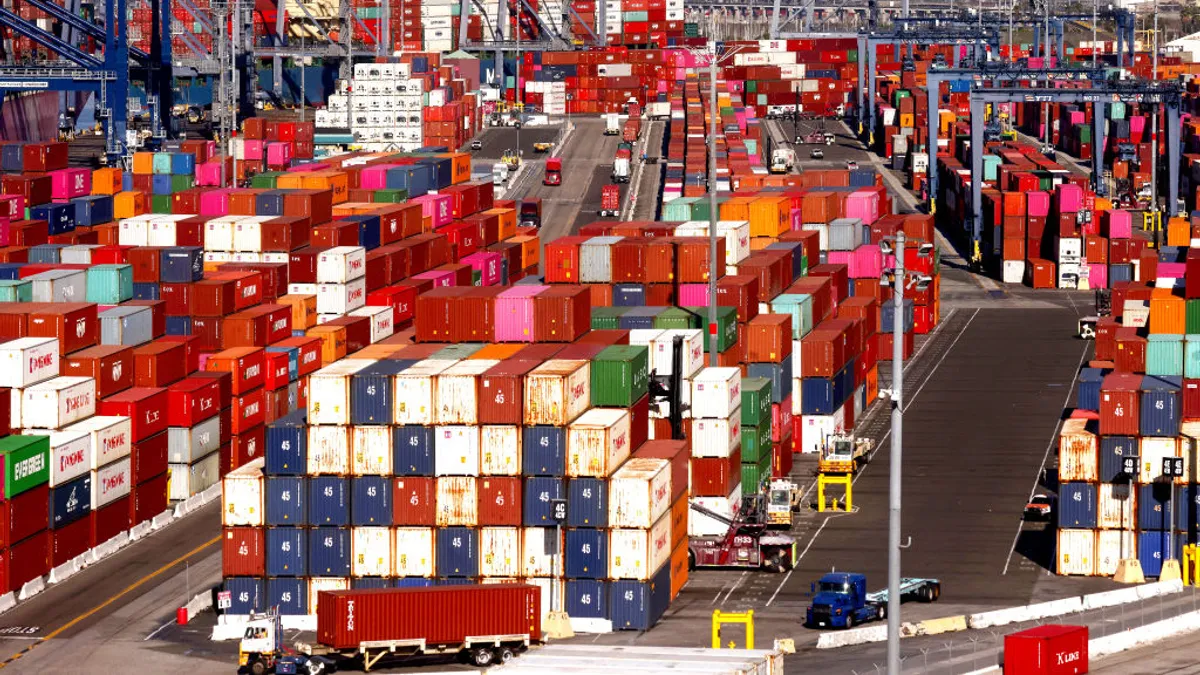Editor's note: This story is part of a series on the trends, opportunities and challenges supply chains will face in 2022. Read the full outlook here.
Stockouts and raw material shortages came to define 2021, and empty shelves pushed the term "supply chains" into the national spotlight.
Skyrocketing demand, the pandemic and other factors driving current supply issues aren't expected to go away in 2022, and shortages of certain materials and products will likely continue. But as companies get better at forecasting and responding to potential disruptions, their impact could be less pronounced.
"This might be the year where we reach some sort of predictability," said Simon Geale, executive vice president of procurement consultancy Proxima. "But it's not going to be the year where we completely alleviate ourselves from the shortages."
Here's a look at some of the biggest supply constraints of 2021 that will likely continue to create headwinds for companies this year.
Semiconductors
Sky-high demand for computer chips is expected to keep supply tight through the rest of the year.
Chips are used in everything from automobiles to household appliances, and widespread shifts among businesses to 5G are placing additional strain on producers. Semiconductor shortages the past two years are expected to have resulted in revenue misses of more than $500 billion worldwide for suppliers and customers, according to a Deloitte report.
Semiconductor producers have taken steps to ramp up production, and capital expenditure projects announced before the pandemic are predicted to add even more capacity this year, according to the report.
Still, that won't be enough to meet demand this year. Semiconductor supplier Broadcom, for example, is "pretty much booked all the way through '22 and even beyond '22 into '23," CEO Hock Tan said in a December earnings call.
Aluminum
Tight supply of aluminum has created problems for the construction industry and for beverage makers who have had trouble getting their hands on enough aluminum cans. Monster Beverage "was not able to fully satisfy increased demand" in the third quarter due to can shortages and other supply chain challenges, co-CEO Rodney Sacks told analysts in November.
China curtailed production of aluminum and other energy-intensive metals last year as part of its plan to reduce carbon emissions, and a report from ING Group found primary production in the country to be 1.2 million tons below the bank's expectations.
Surging natural gas prices in Europe have also pushed some producers to curtail production, exacerbating the global supply situation. Europe lost more than 650,000 tons of annual production capacity since the rise in energy prices began in October, European Aluminium wrote in a letter to the EU Jan. 14.
Aluminum can producers have invested in new projects to ramp up capacity in the U.S. — in September, Ball Corporation announced it would build a $290 million packaging plant in Nevada. But with the plant not expected to come online until late 2022, the company predicts demand will continue to outstrip supply in the short-term.
"Early insights into 2022 is we're significantly oversold again," President Dan Fisher said in a November earnings call.
Food products
Grocery stores may not rid themselves of empty shelves just yet, as labor constraints and challenges with the 2022 crop growing season could keep prices high and supply spotty through the rest of this year.
The fast-spreading omicron variant has upended operations at food manufacturing plants, and a rise in the number of sick workers has raised costs for businesses and limited output. Conagra, owner of Marie Callender's and Reddi-wip, saw a rise in "omicron absenteeism" and expects disruptions last into Q3, CEO Sean Connolly told analysts earlier this month.
Shortages of fertilizer and pesticides have also left producers warning that this year's crop yields could be smaller. Soaring natural gas prices in Europe and curbs on exports from Russia and China is expected to keep fertilizer demand high beyond 2023, an executive with manufacturer CF Industries told analysts in November.
"It's going to continue to get worse, it appears," Southern Valley Fruit and Vegetable Executive Officer Jon Schwalls said during testimony in a Nov. 3 congressional hearing on food supply chain issues. "The less protection products we have, the less yields we're gonna have."
Plastics
A Texas ice storm and two hurricanes along the U.S. Gulf Coast walloped the chemicals supply chain last year, causing factory outages and disruptions to manufacturing that dragged on for months.
Plastic resins, the raw material used to make everything from packaging to paint, were reported to be in short supply for the 10th straight month in December, according to the Institute for Supply Management. Prices last year skyrocketed as much as 50%, according to AlixPartners.
Manufacturers have moved to stockpile more product, which is expected to ease prices and supply constraints in 2022. But increasing demand and a reinstated tax on imported resins will likely keep the market volatile.
Building materials
High materials cost and a lack of supply are lengthening lead times of construction projects and pushing contractors to use alternate materials.
Overall construction input prices are up 22.3% from a year ago, with nonresidential construction prices up 23.2%, according to the Association of Builders and Contractors. Home builder sentiment dropped for the first time in four months on rising inflation and material shortages, according to the National Association of Home Builders.
"The price and availability of building materials, and the supply chain in general, remains the most pressing, immediate challenge for builders as they seek to add housing supply," said NAHB Chairman Chuck Fowke in a release.
Builders faced long lead times last year of everything from wallboard to garage doors, and shortages come as businesses plan new distribution centers and other massive capital expenditure projects to add resilience to their supply chains.
Labor constraints, high demand for construction and long lead times could prompt some companies to reassess plans, said Proxima's Geale.
"These sort of modernization programs that businesses are hanging their hats, we're gonna we're gonna really see who manages to push it through," said Geale.






















